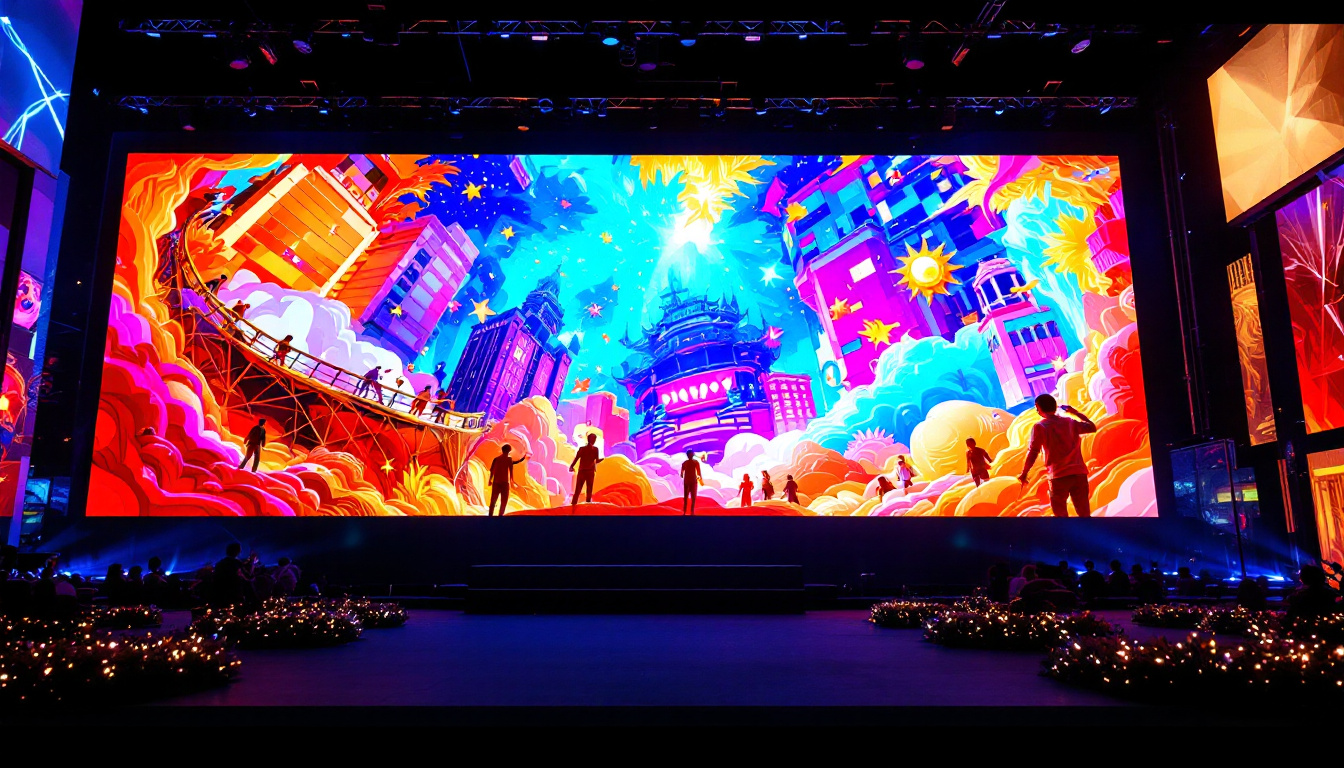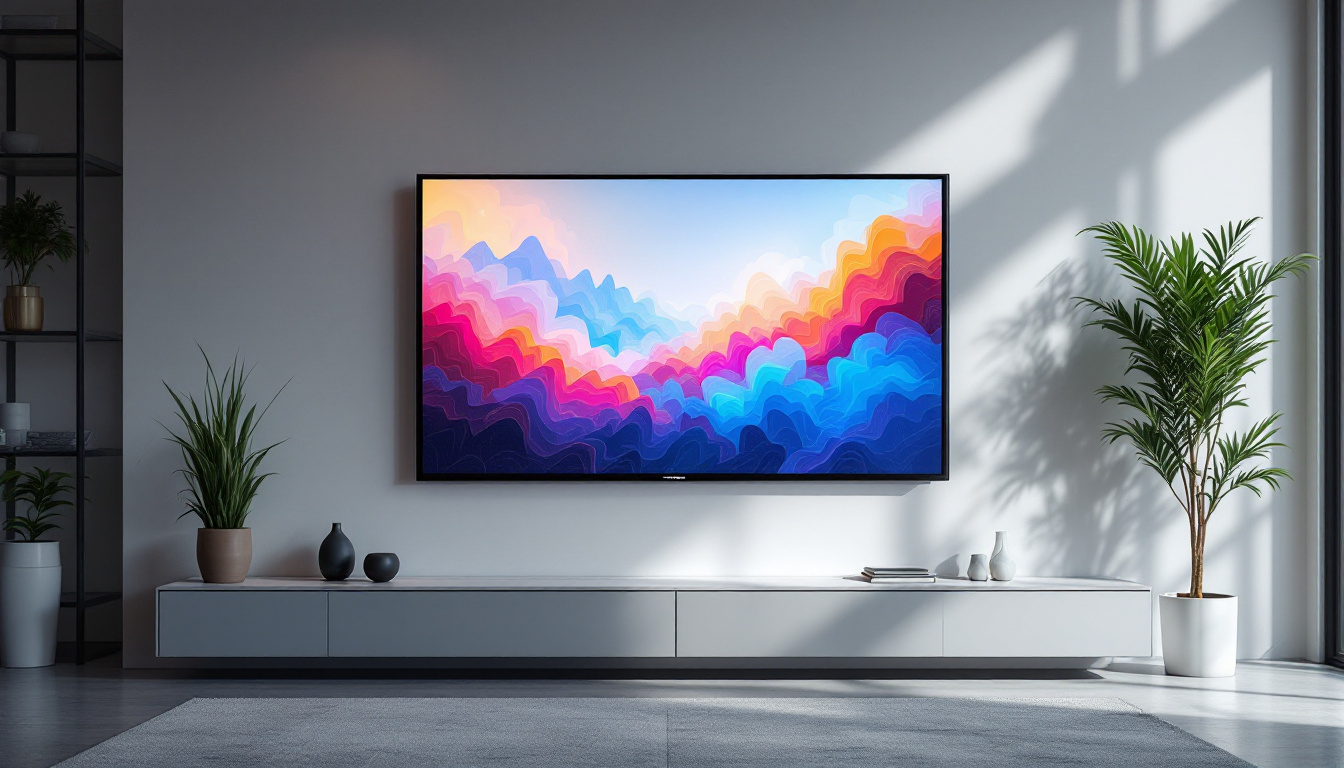In today’s digital age, screens are an integral part of our lives, appearing in everything from smartphones to televisions. Among the various types of displays available, LCD (Liquid Crystal Display) screens have become a popular choice for many consumers. This article delves into the intricacies of LCD technology, its variants, and how it compares to other display types, particularly LED displays.
Understanding LCD Technology
LCD screens utilize liquid crystals to produce images. These crystals are sandwiched between two layers of glass or plastic, and when an electric current passes through them, they align to allow varying degrees of light to pass through. This process creates the images we see on our screens.
The Components of an LCD Screen
An LCD screen consists of several key components that work together to create a visual display. The primary elements include:
- Liquid Crystals: The core of the technology, these substances can change their alignment when subjected to an electric field, manipulating light passage.
- Backlight: Since liquid crystals do not emit light on their own, a backlight is essential. This is typically provided by fluorescent lamps or LEDs.
- Polarizers: These layers filter light to ensure that only the desired wavelengths pass through, enhancing contrast and color accuracy.
These components work in unison to create vibrant images, making LCDs suitable for various applications, from computer monitors to large-scale televisions. The efficiency of these components has significantly improved over the years, leading to thinner screens and lighter devices. As a result, LCD technology has become ubiquitous in everyday life, appearing in smartphones, tablets, and even digital signage in public spaces.
How LCD Screens Work
The operation of an LCD screen can be broken down into several steps:
- Backlight Activation: The backlight illuminates the screen, providing the necessary light for the display.
- Crystal Alignment: Electric currents adjust the alignment of the liquid crystals, controlling how much light passes through.
- Image Formation: The combined effect of the backlight and the liquid crystals creates the final image, which is visible to the viewer.
This process allows for a wide range of colors and brightness levels, contributing to the overall quality of the display. Additionally, advancements in technology have led to the development of various LCD types, such as IPS (In-Plane Switching) and VA (Vertical Alignment), each offering unique benefits in terms of viewing angles and color reproduction. These innovations have made LCD screens more versatile, catering to the needs of gamers, graphic designers, and everyday users alike, who demand high performance and reliability from their displays.
Types of LCD Displays
While all LCD screens share the same fundamental technology, they can be categorized into different types based on their construction and application. The two most common types are Twisted Nematic (TN) and In-Plane Switching (IPS) displays.
TN vs. IPS Displays
Each type of LCD has its own set of advantages and disadvantages, making them suitable for different uses:
- Twisted Nematic (TN): Known for their fast response times and lower production costs, TN panels are often favored in gaming monitors. However, they typically have poorer color reproduction and viewing angles compared to IPS panels.
- In-Plane Switching (IPS): IPS displays offer superior color accuracy and wider viewing angles, making them ideal for graphic design and professional video editing. The trade-off is generally slower response times and higher costs.
Understanding these differences is crucial for consumers looking to purchase a display that meets their specific needs. For instance, gamers who prioritize speed and responsiveness may lean towards TN panels, while photographers and designers may find that the color fidelity of IPS displays is worth the extra investment. Furthermore, the choice between these two types can also depend on the intended use case; for example, a casual user who primarily browses the web or streams videos might not notice the differences as much as a professional would.
Other Variants of LCD Technology
Beyond TN and IPS, there are other variations of LCD technology that cater to specialized applications:
- Vertical Alignment (VA): VA panels provide better contrast ratios and deeper blacks than TN panels, making them suitable for watching movies and gaming in darker environments.
- Advanced Fringe Field Switching (AFFS): A variant of IPS technology, AFFS offers enhanced performance in terms of color reproduction and viewing angles.
These variants highlight the versatility of LCD technology, allowing it to meet a wide range of consumer preferences and requirements. For example, VA panels are particularly popular among home theater enthusiasts due to their ability to deliver rich visuals in low-light settings, while AFFS technology is increasingly being adopted in high-end smartphones and tablets for its vibrant display capabilities. Additionally, newer technologies like Quantum Dot displays are beginning to emerge, promising even better color accuracy and brightness levels, thus expanding the landscape of LCD technology even further.
LED Displays: A Closer Look
While LCD technology is widely used, the term “LED display” often causes confusion. In reality, LED displays are a type of LCD screen that utilizes LEDs for backlighting instead of traditional fluorescent lights. This distinction is crucial for understanding the advantages of LED technology.
How LED Backlighting Works
LED backlighting comes in two primary forms: edge-lit and full-array. Each method has its own characteristics:
- Edge-Lit LED: In this configuration, LEDs are placed along the edges of the screen, allowing for a thinner design. However, this can result in uneven brightness across the display.
- Full-Array LED: This method employs a grid of LEDs behind the entire screen, providing more uniform brightness and improved contrast ratios. Full-array technology often includes local dimming, which enhances black levels by turning off specific LEDs in darker areas of the image.
These backlighting techniques contribute to the overall performance and quality of LED displays, making them a popular choice among consumers.
Benefits of LED Displays
LED displays offer several advantages over traditional LCD screens, including:
- Improved Energy Efficiency: LED backlighting consumes less power than fluorescent alternatives, making LED displays more environmentally friendly and cost-effective in the long run.
- Better Color Accuracy: With the ability to produce a wider color gamut, LED displays often deliver more vibrant and true-to-life images.
- Thinner and Lighter Designs: The compact nature of LED technology allows for slimmer screens, which is particularly advantageous in portable devices.
These benefits have contributed to the growing popularity of LED displays in various consumer electronics.
Comparing LCD and LED Displays
When deciding between LCD and LED displays, it is essential to understand the key differences and similarities. While both technologies use liquid crystals to create images, the backlighting method significantly impacts performance.
Performance Metrics
Several performance metrics can help consumers make an informed decision:
- Brightness: LED displays generally offer higher brightness levels, making them more suitable for well-lit environments.
- Contrast Ratio: Full-array LED displays can achieve better contrast ratios due to local dimming capabilities, resulting in deeper blacks and more dynamic images.
- Color Reproduction: LED displays often provide better color accuracy, particularly in high-end models that utilize advanced technologies.
By comparing these metrics, consumers can select a display that aligns with their viewing preferences and usage scenarios.
Cost Considerations
Cost is another critical factor when choosing between LCD and LED displays. Generally, LED displays tend to be more expensive due to their advanced technology and improved performance. However, the price difference can vary based on brand, size, and specific features.
For budget-conscious consumers, traditional LCD screens may still provide satisfactory performance for everyday tasks, while those seeking the latest technology and superior image quality may opt for LED displays.
Applications of LCD and LED Displays
Both LCD and LED displays find applications across a wide range of industries. Understanding these applications can help consumers appreciate the versatility of these technologies.
Consumer Electronics
In the realm of consumer electronics, LCD and LED displays are ubiquitous. From smartphones and tablets to televisions and computer monitors, these displays are used in devices that shape our daily lives. The choice between LCD and LED often comes down to personal preference, budget, and intended use.
Professional Use Cases
In professional environments, the choice of display technology can significantly impact productivity and output quality. For instance:
- Graphic Design: Professionals in graphic design often prefer IPS LCDs for their superior color accuracy and wide viewing angles.
- Medical Imaging: High-quality displays are crucial in medical imaging, where accurate color representation can influence diagnoses.
These specialized applications highlight the importance of selecting the right display technology based on specific needs.
Future Trends in Display Technology
The world of display technology is continuously evolving, with innovations aimed at enhancing performance and user experience. Several trends are shaping the future of LCD and LED displays.
Advancements in OLED Technology
Organic Light Emitting Diodes (OLED) technology is gaining traction as a competitor to traditional LCD and LED displays. Unlike LCDs, OLEDs emit their own light, allowing for thinner screens and superior contrast ratios. As production costs decrease, OLED displays are becoming more accessible to consumers.
Enhanced Resolution and Refresh Rates
With the rise of 4K and 8K resolutions, display manufacturers are pushing the boundaries of image quality. Higher resolutions combined with faster refresh rates are essential for gaming and high-definition content consumption, leading to a more immersive viewing experience.
Conclusion
Understanding the intricacies of LCD and LED display technologies is essential for making informed purchasing decisions. While both types of displays have their unique advantages, the choice ultimately depends on individual preferences, use cases, and budget considerations.
As technology continues to advance, consumers can expect even more improvements in display quality, energy efficiency, and overall performance. Whether opting for a traditional LCD or a modern LED display, the right choice can significantly enhance the viewing experience.
Discover Cutting-Edge LED Displays with LumenMatrix
Ready to elevate your visual experience with the latest in display technology? LumenMatrix is at the forefront of LED innovation, offering a wide array of LED display solutions tailored to meet your needs. From captivating Indoor and Outdoor LED Wall Displays to dynamic Vehicle and Sports LED Displays, and even customizable options like Floor and Custom LED Displays, LumenMatrix has the perfect solution to enhance your brand’s visibility and audience engagement. Experience the future of visual communication with our All-in-One and Transparent LED Displays. Check out LumenMatrix LED Display Solutions today and transform the way you share your message.































